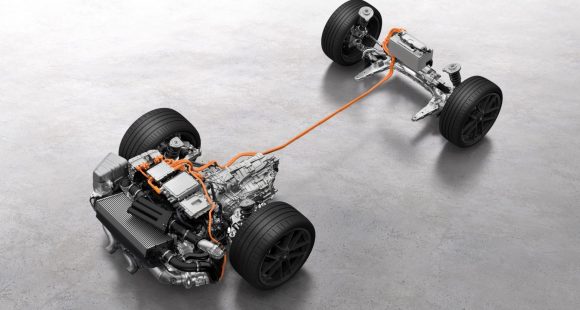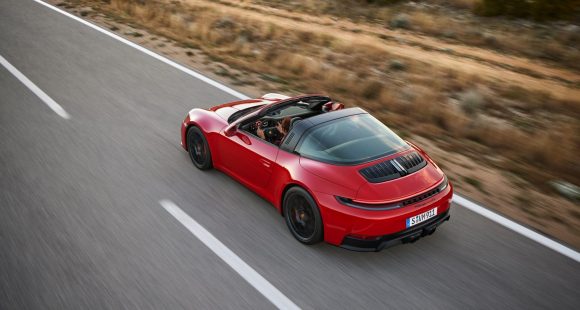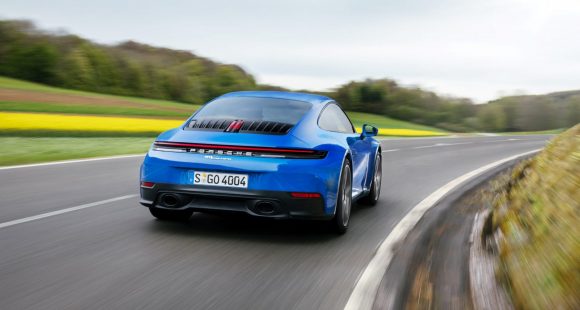Porsche 911 Updated; New Hybrid Model Debuted
May 29, 2024It was only a matter of time before the venerable Porsche 911 would receive some tweaking. As the brand’s halo car, the current 992 generation is getting its first major update, including some design changes, a fully digital cockpit and a new GTS model with a hybrid powertrain.
And that’s actually where we’ll start, this new powertrain is arguably the biggest news here. Dubbed the T-Hybrid, it starts with a new 3.6-liter boxer engine, an increase of .6 liters from previous 911 GTS models, aided by a pair of electric motors, bringing total system output to 532 horsepower and 449 lb-ft.
The engine was made more compact thanks to the inclusion of an electronically-powered air conditioning system, ditching the need for a accessory belt-driven compressor. Other clever engineering has brought engine-only output up to 478 horsepower, with torque remaining at 420 lb-ft of torque.
Bolted up to that unit is a new and strengthened eight-speed PDK transmission, embedded in which is an electric motor capable of another 110 lb-ft of torque. A second electric motor is actually built into the turbocharger unit, placed between the compressor and turbine wheels. The advantage of this design, which also eliminates the need for a wastegate, is two-fold: Quick spooling to build boost while only needing one turbocharger unit, as opposed to a twin setup. The turbo’s electric motor also serves as a generator, using the exhaust stream to generate up to 11 kW.
These electric motors are juiced up by a 1.9-kWh battery, located under the hood where the traditional 12-volt battery would be located. For better weight distribution, said 12-volt is of a lightweight lithium-ion design, now located behind the rear parcel shelf. Speaking of weight, Porsche claims the new GTS Coupe’s curb weight, when compared to its predecessor, has only grown 103 lbs heavier.
And while the T-Hybrid system is possibly the biggest news, it isn’t the only performance gain to be seen. The 992.2 911 Carrera’s 3.0-liter boxer has also been improved, still twin-turbo powered and now kicking out 388 horsepower and 331 lb-ft of torque. Updates include a new intercooler borrowed from the 911 Turbo, placed above the engine and beneath the decklid grille, and new turbochargers handed down from the previous 911 GTS.
Styling-wise, you’ll still easily recognize a Porsche 911 in a crowd of cars. That is, it retains much of the 992’s style, which is, as we know, really just a continuation of the original 911’s evolved sculpting. One of the big focuses was optimizing the aerodynamics. That starts up front with the front fascia, modified further on the GTS model with vertical air flaps, complemented by adaptive front diffusers located on the GTS’s underbody. The 911 features standard LED Matrix design headlights; in back, a rear light band wearing “PORSCHE” scripture. Above that is a new rear decklid grille, and below, the rear license plate is mounted higher thanks to the stylized rear fascia. The GTS comes with a model-specific sport exhaust system.
And speaking of, the GTS also benefits from new suspension enhancements, starting with standard rear axle steering and a standard sport suspension with adaptive dampers. Porsche Dynamic Chassis Control, a roll-stabilization system, is optional, integrated into the hybrid’s high-volt system. Tethered to the suspension are standard 20-inch front wheels and 21-inch rears, wrapped in 245/35 and 315/30 rubber respectively.
The cabin experience, like the exterior, is very much an evolution of the 911 lineage, and that’s best exemplified by the first-ever fully digital instrument cluster to be mounted into a 911’s dash. It’s a 12.6-inch unit, customizable to the driver’s wants and needs, capable of showing up to seven different display views including one mirroring the classic five gauge design with the center-mounted tachometer. The center stack is still bisected by a 10.9-inch screen for infotainment purposes and Apple CarPlay. Another first-ever for the 911 is an engine start button, replacing the key or key FOB ignition but still placed to the left of the steering wheel.
Deliveries of the 2025 911 lineup begin this fall, with GTS models arriving at the end of the year. Porsche has detailed a number of 2025 911 prices, starting with the 911 Carrera at $122,095 with delivery. The 911 GTS will start at $166,895, the Cabriolet version kicking that up to $180,195. The Carrera 4 GTS demands $174,695 and $187,995 for either the Carrera 4 GTS Cabriolet or Targa.
The current 911 Turbo, Turbo S and GT3 RS models will continue to be sold for the 2025 model year with unchanged pricing. And for anyone wondering, a 911 GT3 RS will still command $243,295– but from our extensive track testing of it, it is 100% worth the cost of admission.
















































